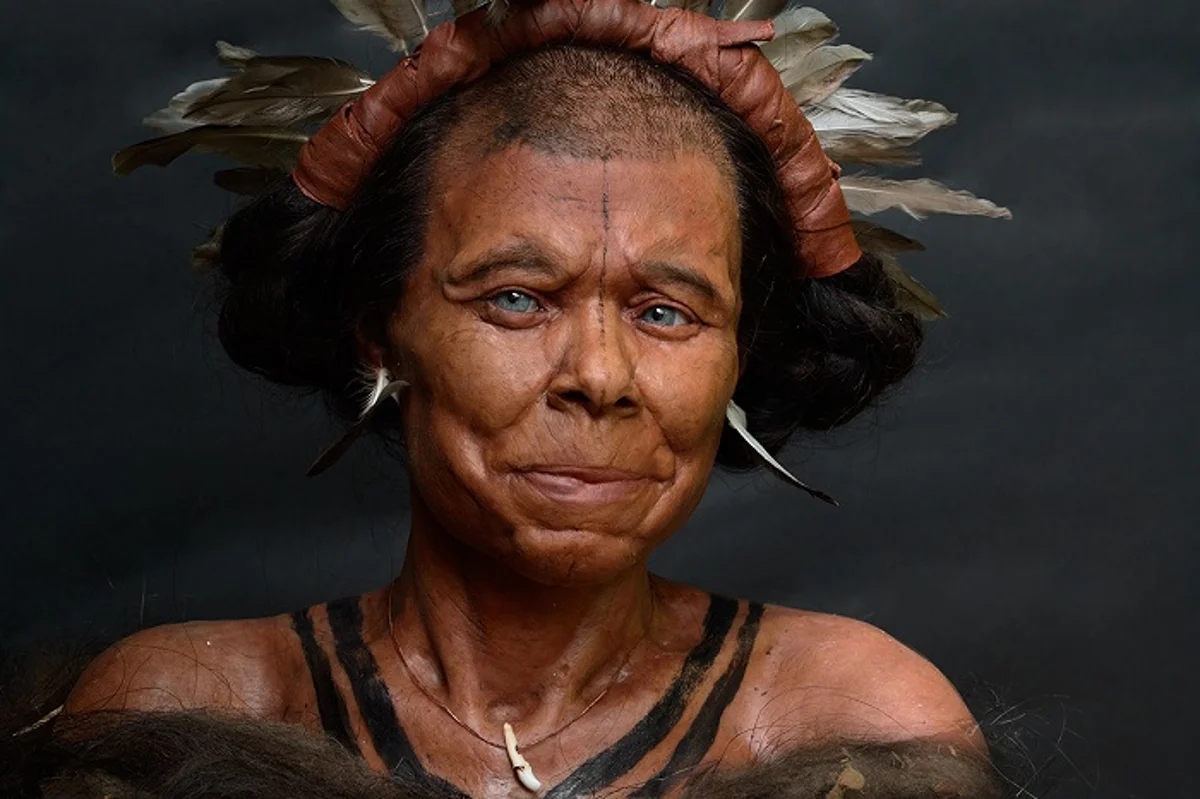By Vishwam Sankaran
Archaeologists have reconstructed the face of a Stone Age Belgian woman and found that she had blue eyes and a dark complexion, shedding more light on the ancestry of modern Europeans.
The prehistoric woman’s fossil remains were unearthed in 1988 in the Margaux cave near Dinant.
Previous studies suggest she lived in the Meuse Valley around 10,500 years ago and belonged to the same Western European hunter-gatherer population as Britain’s famous Cheddar Man.
Now, genetic and archaeological data assessed by Belgium’s Ghent University have made it possible to reconstruct not only her face, but also her living conditions.
An interdisciplinary team of scientists, including archaeologists, anthropologists, and geneticists, collaborated with Dutch artists on the facial reconstruction.
The facial reconstruction, part of the university’s Regional Outlook on Ancient Migration (ROAM) project, reveals that the Margaux woman had a dark complexion and blue eyes, just like Cheddar Man, who is Britain’s oldest modern human specimen unearthed to date.
A 2018 DNA analysis of his remains found he had blue eyes and dark skin, revealing unprecedented insights into the appearance of ancient Britons and that we all “come from somewhere in Africa”.
The Cheddar Man fossil, discovered in a Somerset cave in 1903, revealed that the ancient Briton had “dark to black” skin, blue eyes and dark, curly hair.
The latest findings hint that the Margaux woman had slightly lighter skin than most other Stone Age people analysed in Western Europe to date, which researchers say is a “subtle but important detail”.
Scientists deduced the Stone Age woman’s potential eye and skin colours based on analysis of DNA extracted from parts of her skull.
“Until now, the phenotypic diversity among European hunter-gatherers was only known from a small number of fossils and was thought to be fairly homogeneous,” geneticist Maïté Rivollat said in a statement.
“The skin pigmentation of the Margaux woman points to greater complexity of skin pigmentation within these populations and that it was more heterogeneous than previously thought,” project leader Isabelle De Groote told Live Science.
The latest research also suggests that the Margaux woman’s life was spent mostly outdoors. based on remains of shells, pigments, and other tools found at the cave site.
However, scientists say further research is needed to discern further clues about her lifestyle and appearance.
“Actual skin tone and eye colour is difficult to discern…There is no exact answer in ancient DNA,” De Groote said.
